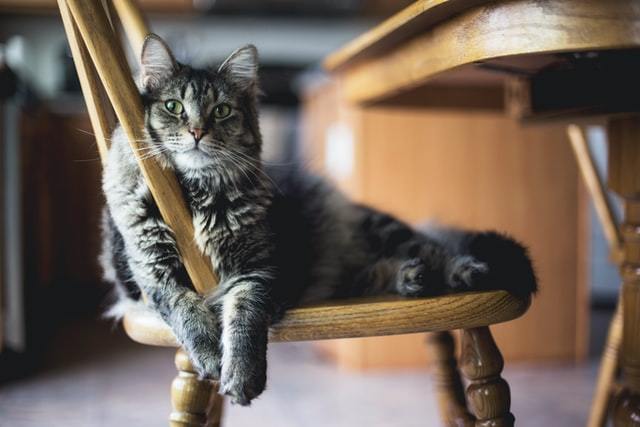Article at a Glance
Feline Tooth Resorption affects a large number of pet cats internationally and leads to significant pain and difficulty eating. Prompt diagnose is important and the mainstay of treatment is dental extraction.
-
There are three types of Feline Oral Resorptive Lesions (FORLs)
-
The cause is still disputed and there are various hypotheses as to why some cats develop FORLs while others never will.
-
Full mouth x-rays are an important part of the diagnostic process and should not be neglected.
Many cat owners have not heard of feline tooth resorption. Indeed, this condition often goes unnoticed. Cats are masters at masking symptoms when unwell and the majority will not tolerate owners looking into their mouth.
Feline Tooth Resorption is a very painful condition that negatively impacts on a cat’s quality of life. Signs can be mistaken for general periodontal disease, but the pain associated with resorptive lesions tends to be more intense. Once established, affected teeth should be removed immediately.
What are the Causes of Tooth Resorption?
Technically, resorptive lesions occur when cells called odontoclasts (tooth remodelling cells) destroy the tooth roots. The cementum is targeted, followed by the dentin. In the place of the roots, jawbone begins to grow. Due to this, the pulp cavity is exposed which inevitably leads to intense pain.
Frustratingly, we are still not entirely sure what causes this condition. We suspect that diet, genetics and the existence of periodontal disease can all play a role. Some hypothesise that excessive Vitamin D is a factor, while others feel hard kibble can damage the teeth. This study also found that females are more at risk for some reason. At this point, not enough is known for us to be sure.
The older a cat is, the more likely that they will be affected by resorptive lesions. However, they can occur in young cats too. Pedigrees seem to be more predisposed, with the Siamese and Abyssinian affected most often.
Importantly, the same factors that cause cavities are not thought to play much of a role in the development of resorptive lesions.
Types
We tend to divide Feline Oral Resorptive Lesions (FORLs) into three types.
|
Type one |
There is no bony replacement and the entire tooth, including root, should be surgically removed. |
|
Type two |
There is definite replacement of the lost tooth structure with bone. The root isn’t present and so cannot be removed. |
|
Type three |
There are both type one and type two changes visible in the same tooth. |
Symptoms
The symptoms of FORLs are not dissimilar to the symptoms of periodontal disease. This can make it difficult for owners to appreciate the difference. We should be on the lookout for:
- A loss of appetite
- Drooling
- Weight loss
- Abnormal chewing and the dropping of food
- Bad breath (halitosis)
- Bleeding gums
- Hiding away and irritability
This is a progressive condition so signs will usually start off mildly and progress over time. Sometimes, owners do not notice any symptoms but advanced FORLs are identified during a routine exam. This highlights the ability cats have to mask pain.
Some owners feel their cats cannot be in pain if they are still eating. The truth is, however, that cats will continue to eat even when in extreme pain. In the wild, if a cat were to stop eating, this would mean certain death. So, cats will do whatever they can to keep going and will ingest food even if it causes intense discomfort.
How to Know if a Cat Has Tooth Resorption?
Some estimates suggest that up to 1 in 2 cats can develop tooth resorption during their lifetime. In this American study, 48% of 145 cats were found to be affected. So, it is something a vet should check for at every wellness exam. While owners should be on the lookout for signs of dental pain, it is a vet’s responsibility to check a cat over for these tricky-to-spot lesions.
It can take an experienced eye to spot the overgrown gun, misshapen tooth or bright red spot on the tooth that is commonly seen with FORLs. As well as seeing abnormalities with the naked eye, most vets will check for them with a series of dental radiographs.
Treatment
Though an owner may try valiantly to instigate at-home dental care such as tooth brushing and mouth washes, the damage cannot be reversed. Lesions progress and become more painful and debilitating. Due to this, it is best that affected teeth are extracted.
It is important before extracting an affected tooth, that a vet takes an x-ray to assess the roots. This way, they can determine if they are dealing with a type one, two or three FORL. This is essential when it comes to planning the extraction. Ideally, all extractions should be surgical extractions. This helps to avoid the tooth fracturing and part of it being left behind.
Adequate pain relief is needed when it comes to treating these lesions. While a cat may act stoic, we know that they will be in pain.
After tooth extraction, offer a wet food diet until the gum has healed over.
How to Prevent Tooth Resorption?
As we are still uncertain what causes FORLs it is difficult to advise on prevention. In some cases where there is a genetic element to the disease, it is possible that not much can be done in the way of prevention.
It is sensible to try to brush our cat’s teeth and use tooth cleaning products such as gels and powders. We should also have their mouths checked regularly and schedule a dental cleaning when advised.
Avoid giving diets which contain a large amount of Vitamin D and do not supplement Vitamin D unless advised to do so by your veterinarian.
Dr. Linda Simon, BVMS, MRCVS
Veterinary surgeon,Dr. Linda Simon MVB MRCVS is a locum veterinary surgeon who has worked in London for the past 8 years. She graduated top of her class in small animal medicine from UCD, Dublin. She is currently a member of the Royal College of Veterinary Surgeons.



